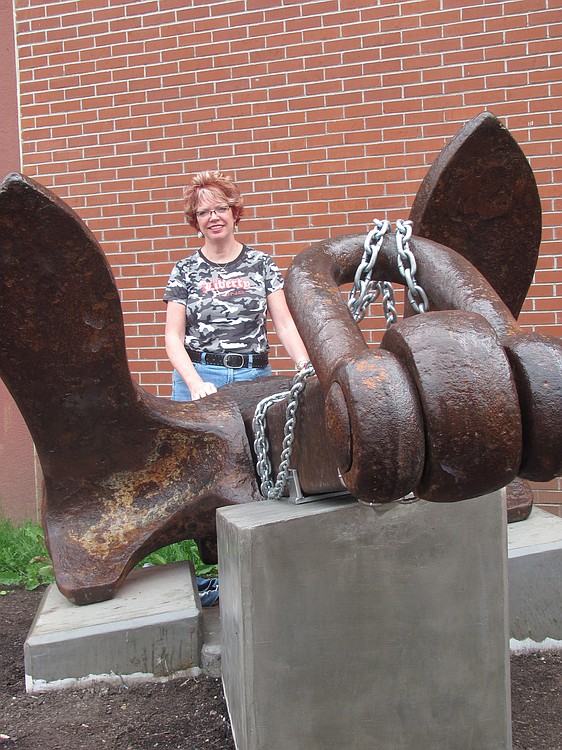When a Camas resident approached Marilyn Boerke to ask if she’d like to have a piece of history, the Liberty Middle School principal was intrigued.“Eunice Abrahamsen contacted me to see if I was interested in procuring and displaying a ‘piece’ of a Liberty ship in order to teach our students the history of the local mill and the reasons why Liberty’s name was chosen,” she said. “I anticipated a small piece of the ship, so I was astounded and thrilled to learn the salvage company was offering to donate one of the ship’s anchors.”
The anchor came from a decommissioned Liberty ship known as the SS Davy Crockett, which had been turned into a flat deck barge. Last summer, an extensive recovery and destruction process began on the ship after it went aground in the Columbia River near Cottonwood Beach. That effort lasted 211 days.
The ship was built between 1941 and 1945, when the United States increased its shipbuilding capacity during World War II. At the Camas mill, now known as Georgia-Pacific, workers built ship rudders, cranes and other wartime materials for the Liberty ships being constructed by Kaiser Aluminum in Vancouver.
When the former Camas High School relocated, the building was remodeled and named Liberty Middle School, in honor of the work done at the mill during World War II.
Given that history, Boerke thought it was very fitting to have the anchor displayed outside the school.


